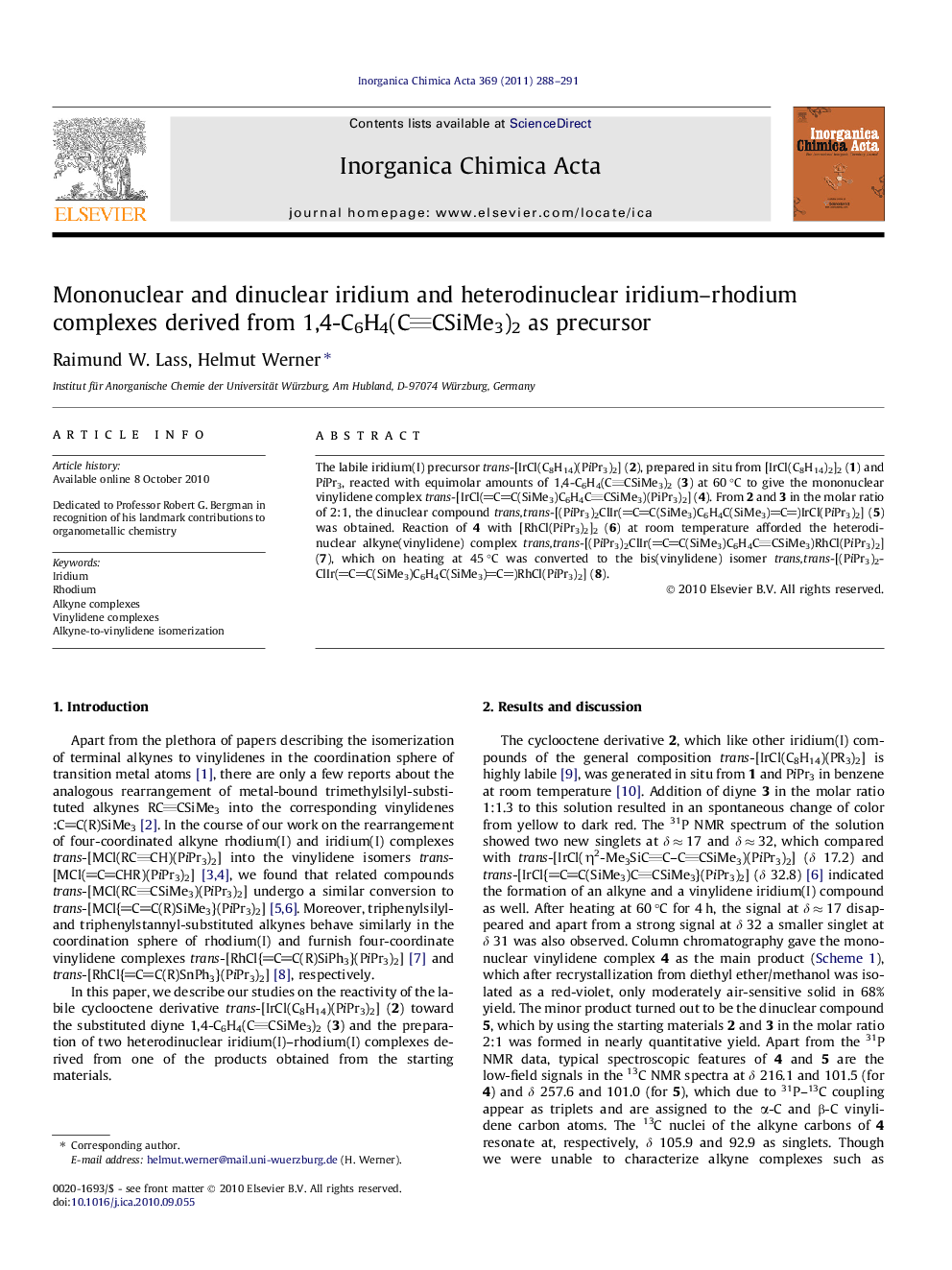| Article ID | Journal | Published Year | Pages | File Type |
|---|---|---|---|---|
| 1307691 | Inorganica Chimica Acta | 2011 | 4 Pages |
The labile iridium(I) precursor trans-[IrCl(C8H14)(PiPr3)2] (2), prepared in situ from [IrCl(C8H14)2]2 (1) and PiPr3, reacted with equimolar amounts of 1,4-C6H4(CCSiMe3)2 (3) at 60 °C to give the mononuclear vinylidene complex trans-[IrCl(CC(SiMe3)C6H4CCSiMe3)(PiPr3)2] (4). From 2 and 3 in the molar ratio of 2:1, the dinuclear compound trans,trans-[(PiPr3)2ClIr(CC(SiMe3)C6H4C(SiMe3)C)IrCl(PiPr3)2] (5) was obtained. Reaction of 4 with [RhCl(PiPr3)2]2 (6) at room temperature afforded the heterodinuclear alkyne(vinylidene) complex trans,trans-[(PiPr3)2ClIr(CC(SiMe3)C6H4CCSiMe3)RhCl(PiPr3)2] (7), which on heating at 45 °C was converted to the bis(vinylidene) isomer trans,trans-[(PiPr3)2ClIr(CC(SiMe3)C6H4C(SiMe3)C)RhCl(PiPr3)2] (8).
Graphical abstractFrom trans-[IrCl(C8H14)(PiPr3)2] and 1,4-C6H4(CCSiMe3)2 as precursors, mono- and bis(vinylidene) iridium(I) complexes with 1,4-C6H4 as the bridging unit were prepared. The mononuclear product reacted with [RhCl(PiPr3)2]2 to give a heterodinuclear Ir–Rh alkyne(vinylidene) complex, which on heating transformed to the bis(vinylidene) isomer.Figure optionsDownload full-size imageDownload as PowerPoint slide
